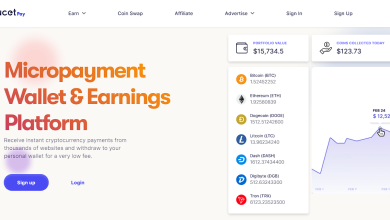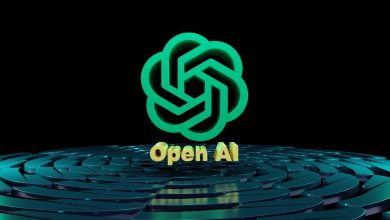Blockchain as a Revolutionary Innovation in Finance
Blockchain as a Revolutionary Innovation in Finance

Blockchain as a Revolutionary Innovation in Finance
Can a technology born out of the need for a decentralized financial system truly revolutionize the way we think about money and financial transactions? The rise of distributed ledger technology has sparked intense interest in the financial sector, with many experts hailing it as a game-changer.

The potential of cryptocurrency and digital assets to democratize access to financial systems and create new opportunities for underserved communities is vast. As Marlon Williams notes, this technology can transform the financial landscape by providing a more inclusive and equitable system.
Key Takeaways
- The growing interest in blockchain technology is driven by its potential to transform the financial sector.
- Distributed ledger technology can democratize access to financial systems.
- Cryptocurrency and digital assets offer new opportunities for underserved communities.
- The financial landscape is on the cusp of a significant transformation.
- Blockchain technology has the potential to create a more inclusive financial system.
The Evolution of Blockchain in Finance
Blockchain’s journey in finance has been marked by rapid innovation, from its early days as the backbone of Bitcoin to its current status as a critical component of financial infrastructure. This evolution has been driven by the technology’s inherent benefits, including security, transparency, and efficiency.
From Bitcoin to Financial Infrastructure
The transition of blockchain from a cryptocurrency-focused technology to a comprehensive financial infrastructure has been significant. Blockchain applications now extend beyond digital currencies to include trade finance, cross-border payments, and asset tokenization.
Key Milestones in Blockchain Development
Early Adoption in Banking
Early adoption in banking has been a crucial milestone. Banks have begun leveraging blockchain for various financial services, enhancing security and reducing transaction times.
Regulatory Recognition Points
Regulatory bodies have started recognizing the potential of blockchain, leading to clearer guidelines and frameworks for its adoption in financial services.
| Milestone | Year | Impact |
|---|---|---|
| Bitcoin Emergence | 2009 | Introduction of blockchain technology |
| First Blockchain Adoption | 2013 | Banks began exploring blockchain |
| Regulatory Frameworks | 2018 | Clearer guidelines for blockchain adoption |
Understanding Blockchain Technology Fundamentals
Understanding blockchain technology requires a deep dive into its core components, including distributed ledger technology and consensus mechanisms. Blockchain’s foundational elements work together to provide a secure, transparent, and efficient framework for financial transactions.
Distributed Ledger Technology Explained
Distributed Ledger Technology (DLT) is the backbone of blockchain, enabling the creation of a decentralized ledger that records transactions across multiple nodes. This technology ensures that once a transaction is recorded, it cannot be altered, thus providing a permanent and transparent record.
The decentralized nature of DLT enhances security by eliminating a single point of failure, making it more difficult for malicious actors to manipulate the data. Projects like Solana have demonstrated the potential of DLT in achieving high transaction speeds and scalability.
Consensus Mechanisms in Financial Applications
Consensus mechanisms are critical in validating transactions and ensuring the integrity of the blockchain. Mechanisms like Proof of Work (PoW) and Proof of Stake (PoS) enable nodes on the network to agree on the state of the blockchain, preventing fraudulent activities.
The choice of consensus mechanism can significantly impact the performance and security of a blockchain network. For instance, Hyperliquid’s use of a sophisticated consensus algorithm has improved trading efficiency on its platform.
Immutability and Transparency Features
The immutability of blockchain technology ensures that once a transaction is recorded, it cannot be altered or deleted. This feature, combined with transparency, provides a trustworthy environment for financial transactions, as all participants can view the entire history of transactions.
These features are fundamental to the trustless nature of blockchain, allowing participants to rely on the technology itself rather than on intermediaries. The transparent and immutable nature of blockchain has significant implications for enhancing security and reducing fraud in financial applications.
Current Applications of Blockchain in Finance
The finance sector is experiencing a paradigm shift with the advent of blockchain technology applications. Blockchain’s decentralized and transparent nature is addressing long-standing issues in financial transactions, such as security, efficiency, and cost.
Cross-Border Payments and Remittances
Blockchain is significantly improving cross-border payments by reducing transaction times and costs. Traditional remittance services often involve multiple intermediaries, leading to delays and higher fees. Blockchain-based systems enable direct transactions between parties, enhancing speed and reducing expenses. For instance, Ripple’s blockchain network has been adopted by numerous financial institutions for facilitating fast and cost-effective cross-border transactions.
Asset Tokenization and Digital Securities
Asset tokenization is another critical application, allowing for the representation of physical assets as digital tokens on a blockchain. This innovation enhances liquidity and enables fractional ownership of assets, making it easier for investors to diversify their portfolios. Companies like tZERO are pioneering the development of digital securities, providing a more efficient and transparent way to issue and trade securities.
Trade Finance Transformation
Trade finance is being transformed through blockchain, with significant improvements in supply chain financing and letter of credit automation.
Supply Chain Financing
Kuvi.ai, for example, is using blockchain to reduce transaction costs for SMEs by providing a transparent and efficient platform for supply chain financing. This not only streamlines the process but also reduces the risk of fraud and improves cash flow management for businesses.
Letter of Credit Automation
Blockchain-based platforms are automating letter of credit processes, making them more efficient and less prone to errors. By digitizing and automating this traditionally paper-intensive process, companies can significantly reduce processing times and increase trust among trading partners.
In conclusion, blockchain technology is being effectively utilized in various financial applications, including cross-border payments, asset tokenization, and trade finance transformation. As the technology continues to evolve, we can expect even more innovative applications to emerge, further revolutionizing the financial sector.
Cryptocurrency’s Role in the Financial Ecosystem
Cryptocurrency has emerged as a revolutionary force in finance, creating new financial assets and redefining the concept of money. As the financial landscape continues to evolve, the role of cryptocurrencies is becoming increasingly significant.
Bitcoin and Ethereum as Financial Assets
Bitcoin and Ethereum are at the forefront of the cryptocurrency market, serving as leading financial assets in the digital economy. Bitcoin, often referred to as digital gold, is a store of value and a hedge against inflation. Ethereum, on the other hand, is not just a cryptocurrency but a platform for decentralized applications, making it a versatile financial asset.
As stated by “The integration of cryptocurrencies into the financial system is not just an alternative but a necessity for the future of finance.” –
Financial Expert
Stablecoins for Financial Stability
Stablecoins are designed to maintain a stable value relative to a fiat currency, reducing the volatility often associated with cryptocurrencies. This stability makes them an attractive option for investors looking to mitigate risk. Stablecoins also facilitate faster and cheaper transactions, enhancing financial stability.
Institutional Adoption of Digital Currencies
The increasing institutional adoption of digital currencies is a testament to the growing legitimacy of cryptocurrencies in the financial ecosystem. Institutions are investing in cryptocurrencies, recognizing their potential as a new asset class. This trend is expected to continue, further integrating cryptocurrencies into the mainstream financial system.
In conclusion, cryptocurrencies are playing a pivotal role in shaping the future of finance. With their growing adoption and the development of new financial instruments, the financial ecosystem is poised for significant transformation.
Decentralized Finance (DeFi): Reshaping Traditional Banking
DeFi represents a significant shift in the financial sector, leveraging blockchain technology to create more open and accessible financial systems. This emerging field is transforming traditional banking by offering decentralized alternatives for lending, borrowing, and trading.
Lending and Borrowing Platforms
DeFi lending platforms allow users to lend their assets to others, earning interest on their holdings. Conversely, borrowers can access loans by providing collateral, often in the form of cryptocurrency. This system operates without traditional banking intermediaries, potentially reducing costs and increasing efficiency.
Decentralized Exchanges (DEXs)
DEXs enable users to trade cryptocurrencies directly, without relying on centralized exchanges. This model enhances security and reduces the risk of asset confiscation. Hyperliquid, for instance, has gained prominence in the DEX market with its innovative features and competitive offerings.
Yield Farming and Liquidity Mining
Yield farming involves providing liquidity to DeFi protocols in exchange for rewards, typically in the form of additional tokens. Liquidity mining is a related concept where users are incentivized to provide liquidity to specific markets. These practices have become popular in the DeFi ecosystem, although they come with their own set of risks.
Risk Assessment in DeFi
While DeFi offers numerous opportunities, it also involves significant risks, including smart contract vulnerabilities, market volatility, and regulatory uncertainties. Investors must conduct thorough research and risk assessments before participating in DeFi activities.
As DeFi continues to evolve, it is likely to have a profound impact on traditional banking systems, offering more inclusive and efficient financial services. However, addressing the associated risks will be crucial for its long-term success.
Smart Contracts Revolutionizing Financial Agreements
The advent of smart contracts is revolutionizing financial transactions, making them more efficient and secure. Smart contracts are self-executing contracts with the terms of the agreement written directly into lines of code. They are stored and replicated on a blockchain, ensuring transparency and immutability.
Automating Financial Processes
Smart contracts automate complex financial processes by executing transactions based on predefined conditions. This automation reduces the need for manual intervention, minimizing the risk of errors and increasing the speed of transaction processing.
Key benefits of automating financial processes with smart contracts include:
- Increased efficiency through automated execution
- Reduced risk of human error
- Enhanced transparency through blockchain technology
Reducing Intermediaries in Transactions
By enabling direct transactions between parties, smart contracts reduce the need for intermediaries. This not only decreases transaction costs but also increases the speed of settlement.

Smart Contract Use Cases in Banking
Smart contracts have various applications in banking, including trade finance, securities trading, and compliance. For instance, they can be used to automate the verification and execution of trade agreements, reducing the time and cost associated with these transactions.
Examples of smart contract use cases in banking include:
- Trade finance: Automating the issuance of letters of credit
- Securities trading: Streamlining the settlement process
- Compliance: Automating regulatory reporting
As the financial sector continues to adopt smart contract technology, we can expect to see significant improvements in efficiency, transparency, and security.
Benefits of Blockchain in Finance
Blockchain’s impact on the financial sector is multifaceted, offering enhanced security, reduced costs, and increased efficiency. This technology is transforming the financial landscape by providing a secure, transparent, and efficient way to conduct transactions.
Enhanced Security and Fraud Prevention
One of the primary benefits of blockchain in finance is its ability to enhance security and prevent fraud. The immutable nature of blockchain technology ensures that once a transaction is recorded, it cannot be altered or deleted. This feature significantly reduces the risk of fraud and cyber-attacks.
Key security features include:
- Cryptographic encryption
- Immutable ledger
- Consensus mechanisms
Cost Reduction and Operational Efficiency
Blockchain technology also enables financial institutions to reduce costs and improve operational efficiency. By automating processes and eliminating intermediaries, blockchain streamlines transactions and reduces the need for manual intervention.
Financial Inclusion Opportunities
Blockchain has the potential to promote financial inclusion by providing access to financial services for underserved populations. This is achieved through:
Serving the Unbanked Population
Blockchain-based financial services can reach individuals who are unbanked or underbanked, providing them with access to basic financial tools.
Microfinance Applications
Microfinance applications on blockchain enable small-scale financial transactions, fostering economic activity at the grassroots level.
| Benefit | Description | Impact |
|---|---|---|
| Enhanced Security | Immutable ledger and cryptographic encryption | Reduced fraud and cyber-attacks |
| Cost Reduction | Automation and elimination of intermediaries | Lower transaction costs |
| Financial Inclusion | Access to financial services for the unbanked | Increased economic participation |
Challenges and Limitations of Blockchain Adoption
Despite its potential, blockchain adoption in finance faces several significant challenges. The technology’s growth is hindered by regulatory uncertainty, scalability issues, and the complexities of integrating with existing financial systems.
Regulatory Hurdles and Compliance Issues
One of the primary challenges facing blockchain adoption is the regulatory environment. Financial institutions must navigate a complex web of regulations that vary by jurisdiction, making it difficult to implement blockchain solutions that comply with all relevant laws. Regulatory clarity is essential for widespread adoption.
Scalability and Performance Concerns
Blockchain’s scalability is another significant concern. As the number of transactions increases, the network’s ability to process them efficiently becomes a challenge. Solutions like sharding and layer 2 scaling are being explored to address these issues.
Integration with Legacy Systems
Integrating blockchain technology with existing financial infrastructure is a complex task. It requires significant investment in technology and training to ensure seamless interaction between old and new systems.
Cybersecurity Considerations
Cybersecurity is a critical aspect of blockchain adoption. While blockchain itself is secure, surrounding infrastructure, such as wallets and exchanges, can be vulnerable to attacks. Ensuring the security of these components is crucial.
| Challenge | Description | Potential Solution |
|---|---|---|
| Regulatory Hurdles | Unclear or varying regulations across jurisdictions | Advocacy for clear, consistent regulations |
| Scalability Concerns | Limited transaction processing capacity | Implementation of scaling solutions like sharding |
| Integration Challenges | Difficulty integrating with existing financial systems | Investment in compatible technology and training |
| Cybersecurity Risks | Vulnerability of surrounding infrastructure | Enhanced security measures for wallets and exchanges |

Investment Opportunities in Blockchain Finance
As blockchain technology matures, it is creating significant investment opportunities in finance. The blockchain finance sector is rapidly evolving, offering diverse avenues for investors to participate in this emerging market.
Venture Capital in Blockchain Startups
Venture capital firms are increasingly investing in blockchain startups, recognizing the potential for high returns in this innovative space. These investments are crucial for the development of new blockchain-based financial products and services.
Public Market Investments
Public market investments in blockchain finance are also on the rise, with companies listing on stock exchanges and offering blockchain-related financial products. This trend is making it easier for a broader range of investors to participate in the blockchain economy.
Tokenized Investment Products
The emergence of tokenized investment products is another significant development, allowing for the representation of traditional assets on the blockchain. This innovation is expected to increase liquidity and transparency in financial markets.
In conclusion, the investment opportunities in blockchain finance are vast and varied, ranging from venture capital investments in startups to public market investments and tokenized products. As the blockchain ecosystem continues to mature, these opportunities are likely to expand, offering new ways for investors to engage with the financial sector.
Conclusion: The Future Landscape of Blockchain in Financial Services
The financial services sector is on the cusp of a revolution, driven by the continued advancement and adoption of blockchain technology. As we’ve explored, blockchain has evolved significantly from its origins with Bitcoin, now offering a robust infrastructure for a wide range of financial applications.
Blockchain innovation is expected to reshape financial services, enhancing security, reducing costs, and increasing operational efficiency. The future of blockchain in finance looks promising, with potential applications in cross-border payments, asset tokenization, and trade finance.
As the industry continues to mature, we can expect to see increased institutional adoption, improved regulatory frameworks, and further development of decentralized finance (DeFi) platforms. The impact of blockchain on financial services will be significant, driving innovation and transforming traditional banking models.
With ongoing investments in blockchain startups and the development of new financial products, the future landscape of blockchain in financial services is set to be dynamic and rapidly evolving.
FAQ
What is blockchain technology and how is it used in finance?
Blockchain technology is a decentralized, distributed ledger that records transactions across a network of computers. In finance, it is used to facilitate secure, transparent, and efficient transactions, such as cross-border payments and asset tokenization.
What are the benefits of using blockchain in finance?
The benefits of using blockchain in finance include enhanced security, cost reduction, and financial inclusion opportunities. It also enables the creation of decentralized financial systems, such as DeFi, and automates financial processes through smart contracts.
What is DeFi and how does it work?
DeFi, or decentralized finance, refers to a set of financial services and applications that operate on blockchain technology and are decentralized, meaning they are not controlled by a single entity. DeFi applications include lending, borrowing, and decentralized exchanges.
What are smart contracts and how are they used in finance?
Smart contracts are self-executing contracts with the terms of the agreement written directly into lines of code. In finance, they are used to automate financial processes, reduce the need for intermediaries, and increase the efficiency of transactions.
What are the challenges and limitations of blockchain adoption in finance?
The challenges and limitations of blockchain adoption in finance include regulatory hurdles, scalability concerns, and integration with legacy systems. Additionally, there are cybersecurity considerations and the need for industry-wide standards.
What is the role of cryptocurrency in the financial ecosystem?
Cryptocurrency plays a significant role in the financial ecosystem, serving as a financial asset, a means of exchange, and a store of value. Stablecoins, in particular, are used to maintain financial stability, while institutional adoption of digital currencies is on the rise.
What are the investment opportunities in blockchain finance?
Investment opportunities in blockchain finance include venture capital investments in startups, public market investments, and tokenized investment products. These opportunities allow investors to tap into the growth potential of blockchain technology and its applications in finance.
How does blockchain technology enhance security in finance?
Blockchain technology enhances security in finance through its decentralized, immutable, and transparent nature. It reduces the risk of fraud and cyber attacks, and provides a secure and reliable way to conduct transactions.
What is the future potential of blockchain in finance?
The future potential of blockchain in finance is vast, with ongoing innovations and expected impact on financial services. As the technology continues to evolve, we can expect to see increased adoption, improved scalability, and new use cases emerge.





